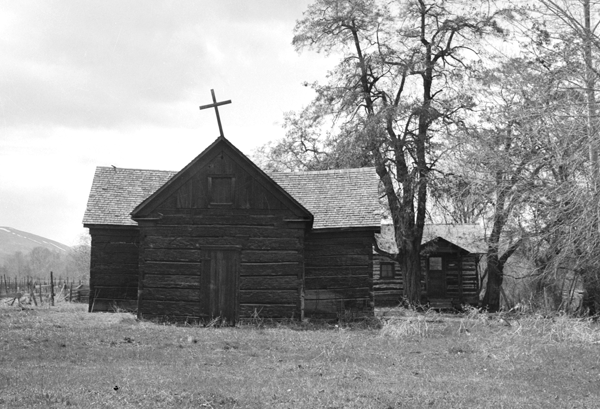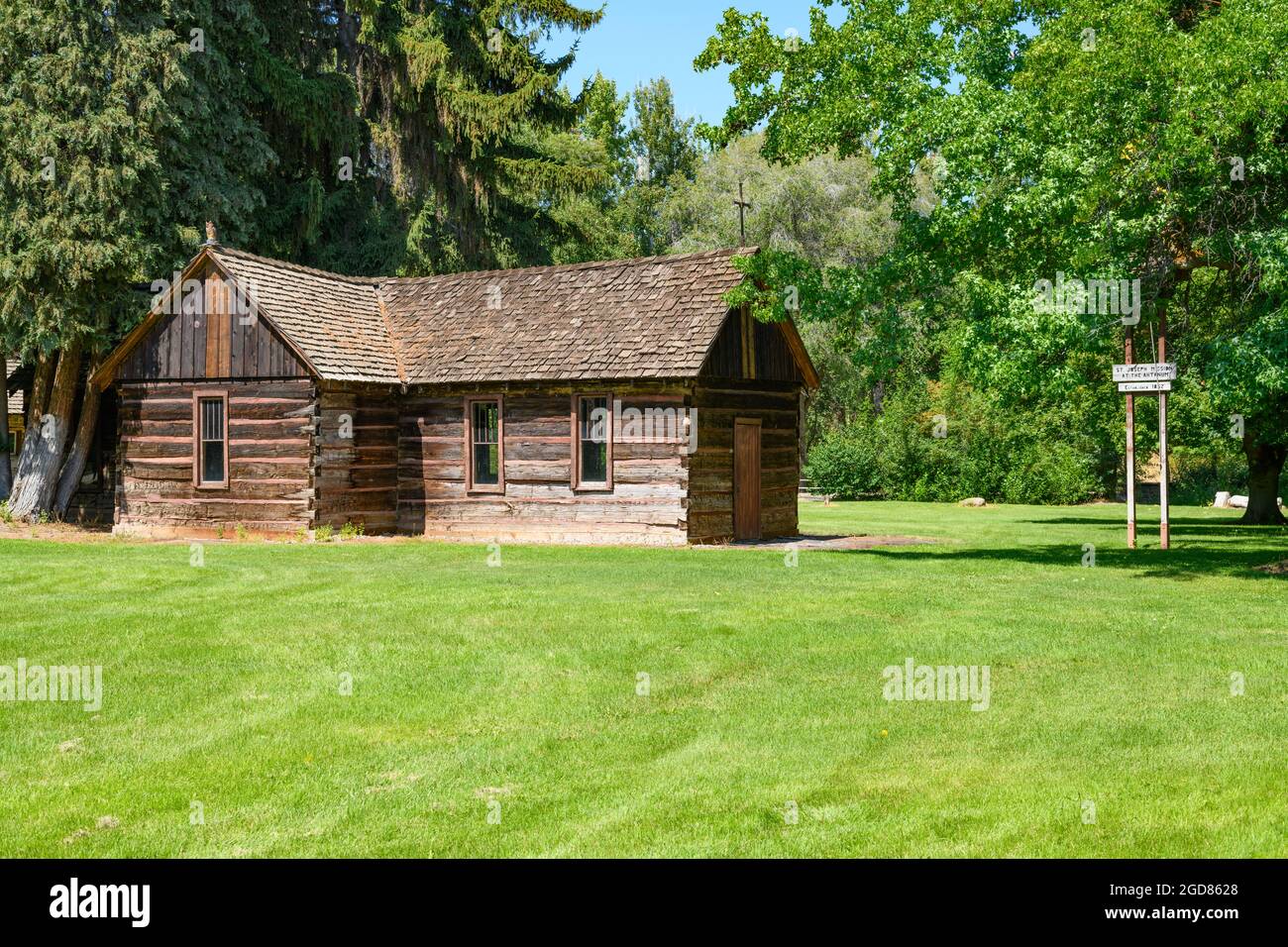
The Scarred Earth: Unearthing Legends at Saint Joseph’s Mission, Washington
America, a land forged in revolution and expansion, is a continent rich with narratives. From the mythical frontiers of Pecos Bill and Paul Bunyan to the haunting whispers of the Headless Horseman, these tales form the bedrock of a shared cultural identity. Yet, the most profound American legends are often not whimsical fables, but the echoing memories of real events – battles fought, sacrifices made, and landscapes forever altered. These are the stories that transcend mere history, taking on the weight of myth, passed down through generations, shaping our understanding of who we are. One such narrative, less celebrated in national lore but deeply etched into the soil and soul of the Pacific Northwest, revolves around the Battle of Saint Joseph’s Mission in Washington State, a pivotal, yet often overlooked, chapter in the complex tapestry of American expansion and Indigenous resistance.
To understand the legend of Saint Joseph’s Mission, we must first appreciate the broader canvas of American legends. These stories are diverse, reflecting the vastness of the nation and the multiplicity of its peoples. Indigenous legends, passed down orally for millennia, speak of creation, animal spirits, trickster figures, and the deep, spiritual connection to the land. The Salish peoples of the Pacific Northwest, for instance, tell stories of the Changer, a powerful transformer who shaped the landscape and its inhabitants, imbuing every mountain and river with meaning. Then there are the legends of the colonial period: tales of pioneering bravery, witchcraft accusations, and the early struggles for independence. The frontier era brought forth stories of rugged individuals, outlaws, and the mythical figures who tamed (or were tamed by) the wilderness. All these narratives, whether grand or intimate, serve a similar purpose: to explain, to inspire, to warn, and to preserve memory.
The Pacific Northwest, with its dramatic landscapes of towering volcanoes, dense forests, and powerful rivers, has its own distinct legendary character. It is a region where the wildness of nature often overshadowed human endeavors, and where the clash of cultures was particularly intense. The arrival of Euro-American settlers, driven by the promise of land, gold, and Manifest Destiny, irrevocably altered the lives of the Indigenous peoples who had called this region home for thousands of years. Treaties, often broken or misunderstood, became instruments of dispossession, and the inevitable conflicts that followed spawned their own legends of heroism, tragedy, and enduring spirit.

It is within this volatile crucible that the story of Saint Joseph’s Mission, often referred to in historical accounts as the Battle of Union Gap or the Ahtanum Mission Battle, takes on its legendary resonance. Located near present-day Yakima, Washington, the mission itself was a beacon of early Jesuit presence in the region. Established in 1847 by Father Pascal Ricard, it aimed to evangelize the Yakama people, offering not just spiritual guidance but also agricultural instruction and a degree of refuge amidst the escalating tensions. The mission, with its modest church and dwellings, represented a complex blend of cultural exchange and colonial ambition, a place where different worlds intersected, sometimes harmoniously, often with friction.
The mid-1850s were a period of intense upheaval in Washington Territory. The discovery of gold east of the Cascades, coupled with increasing settler encroachment, fueled the Yakama War (1855-1858). A series of broken treaties, land disputes, and acts of violence on both sides ignited a widespread conflict that pitted various Indigenous nations, including the Yakama, Palouse, Walla Walla, and Cayuse, against the growing might of the U.S. Army and local militias. It was a war for survival, for land, and for a way of life.
The Battle of Saint Joseph’s Mission, which occurred in October 1855, was a significant engagement in this conflict. Following an ambush of a U.S. Army detachment led by Major Granville O. Haller, which resulted in a decisive defeat for the Americans, a larger force under Major Gabriel J. Rains was dispatched to quash the Indigenous resistance. Rains’ command, comprising several hundred regular soldiers and volunteers, marched into the Yakima Valley, intent on confronting the Yakama warriors led by Kamiakin, a powerful and respected chief.
On October 17, 1855, Rains’ forces encountered a substantial gathering of Yakama warriors near the Saint Joseph’s Mission. The mission, ironically, became the backdrop for a brutal clash. The ensuing battle was fierce and protracted. The Indigenous warriors, utilizing their intimate knowledge of the terrain and employing effective guerrilla tactics, engaged the better-armed but less mobile American forces. The fighting raged for several hours, with both sides suffering casualties. While the American forces eventually gained the upper hand, forcing the Yakama to retreat, the battle was far from a decisive victory in the conventional sense. The Indigenous resistance continued, demonstrating their resolve and the difficulty the U.S. Army faced in subduing them.
An interesting fact emerges from the aftermath: The mission itself, a symbol of attempted peace and spiritual outreach, was subsequently burned. Accounts vary on who was responsible, with some blaming the retreating Indigenous warriors and others suggesting it was burned by settlers or militia to deny its use as a sanctuary. Regardless of the perpetrator, the destruction of the mission underscored the profound tragedy of the conflict, where even sacred spaces were not spared the ravages of war.
From a historical event, the Battle of Saint Joseph’s Mission transitions into legend through the crucible of memory and cultural significance. For the Yakama people, it became a poignant reminder of their courageous defense of their ancestral lands and their way of life against overwhelming odds. The stories passed down through generations would emphasize the bravery of Kamiakin and his warriors, their strategic prowess, and the immense cost of resistance. It represents a watershed moment – not just a battle, but a stand against the tide of forced assimilation and dispossession. The land around the mission, now known as Union Gap, forever bears the imprint of this struggle, a sacred battleground where ancestors fought and died.
For the settlers and the U.S. Army, the battle cemented a narrative of arduous frontier warfare, of confronting a determined and formidable foe. While often overshadowed by larger, more nationally recognized conflicts, it contributed to the broader legend of American expansion – a narrative of overcoming obstacles, taming the wilderness, and establishing dominion. The burning of the mission, for some, might have served as a justification for further military action, framing the Indigenous peoples as "savages" who destroyed even their own places of worship – a common trope in colonial narratives.
The legend of Saint Joseph’s Mission is therefore not monolithic; it is a layered narrative, viewed through different cultural lenses. It speaks to the enduring trauma of colonization and the resilience of Indigenous peoples. It highlights the stark realities of resource competition and the tragic consequences of cultural misunderstanding and outright aggression. The physical site, even if no longer marked by the original mission buildings, remains a powerful mnemonic, a place where the past lingers.

As historian Clifford E. Trafzer, an expert on the Yakama people, often emphasizes: "The land remembers. The stories are embedded in the landscape, and for Indigenous people, these places are not just historical sites but living entities that connect them to their ancestors and their identity." The scarred earth around Saint Joseph’s Mission, though now largely developed, still holds these echoes. One can imagine the frantic shouts, the crack of rifles, the thud of arrows, and the desperate prayers that once filled the air.
Today, the legend of Saint Joseph’s Mission serves as a powerful reminder of the complex and often painful origins of modern America. It challenges us to look beyond simplistic narratives of heroism and villainy, and instead to grapple with the nuanced realities of a shared history. It urges us to listen to all voices, particularly those that have been marginalized or silenced. The legend is not just about what happened, but about how it is remembered, interpreted, and taught. It underscores the importance of acknowledging the Indigenous perspective, of understanding the profound loss and resilience that defines much of Native American history.
The story of Saint Joseph’s Mission, therefore, is a legend not of mythical beasts or fantastical feats, but of human endurance, conflict, and the enduring power of place. It is a legend that compels us to confront the uncomfortable truths of our past, to recognize the deep scars left on both the land and its peoples, and to seek a more complete and just understanding of the American narrative. In its quiet yet profound way, this battle, fought on the fields of the Yakima Valley, speaks volumes about the legends that truly define America: the persistent echoes of struggles for freedom, identity, and the very soul of a nation.


